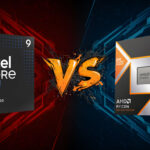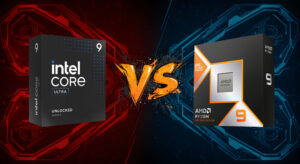The Old GPU Miracle: GTX 1070 Still Shines in Modern Gaming!

In the fast-paced world of gaming technology, graphics cards are constantly evolving. Every year brings new GPUs with promises of better performance, advanced visual effects, and support for modern features like Ray Tracing and AI-enhanced graphics. Despite this rapid innovation, some older GPUs continue to impress even in today’s gaming landscape. One of the most remarkable examples is the NVIDIA GeForce GTX 1070.
Since its launch in the second quarter of 2016, the GTX 1070 quickly gained a reputation as a powerful yet affordable graphics card. It was designed to deliver high-end performance without requiring the top-tier budget, making it a favorite among gamers who wanted to play the latest titles smoothly without overspending. Over seven years later, the card still maintains its relevance, providing solid performance across a wide variety of modern games.
Whether you’re revisiting classic games or exploring modern AAA titles, the GTX 1070 proves that a well-built GPU can remain a reliable companion for years. Its combination of strong specs, versatility, and durability makes it a standout option for anyone building a mid-range gaming PC.
Key Specifications
The GTX 1070 is designed for desktop PCs and manufactured by NVIDIA. It connects via PCIe 3.0 x16, featuring 8GB of GDDR5 memory, a base core clock between 1506 and 1670 MHz, and a boost clock from 1683 to 1898 MHz. Its effective memory clock ranges from 8000 to 8500 MHz.
It supports DirectX 12 and OpenGL 4.5, with a TDP between 150 and 250 watts. Depending on the version, the card measures 169–350 mm in length, comes with 1–4 cooling fans, and occupies 1–2 case slots. It also supports 2-way SLI and G-Sync frame synchronization, making it versatile for various setups.
Performance in Modern Games
Using benchmarks from PC-Builds with an AMD Ryzen 5 5500 3.60 GHz, the GTX 1070 continues to deliver playable performance in modern titles:
- Battlefield 6 achieves around 47 FPS at 1080p, 41 FPS at 1440p, and 34 FPS at 4K, showing that the card can still handle demanding AAA shooters at medium settings.
- Cyberpunk 2077 a more demanding open-world game, runs at approximately 54 FPS at 1080p, 40 FPS at 1440p, and 26 FPS at 4K, highlighting the limitations for ultra settings.
- Assassin’s Creed Valhalla delivers around 52 FPS at 1080p, 38 FPS at 1440p, and 24 FPS at 4K, proving that even large open-world titles are playable with some adjustments.
These examples illustrate that 1080p remains the sweet spot, 1440p is playable with moderate settings, and 4K requires compromises for smooth gameplay.
How Many Games Can Be Played Smoothly?
The GTX 1070 maintains strong compatibility with most popular games:
- At 1080p, it can run 100% of games above 30 FPS and 86% above 60 FPS.
- At 1440p, around 99% of games exceed 30 FPS, and 54% exceed 60 FPS.
- At 4K, performance drops, with only 81% of games above 30 FPS, and very few surpassing 60 FPS.
This confirms that the GTX 1070 remains reliable for modern gaming at mid-to-high settings, especially for 1080p enthusiasts.
CPU Compatibility and Bottlenecks
While the GTX 1070 performs well, pairing it with some processors can create a bottleneck, limiting its full potential. Notable CPUs where bottlenecks may occur include:
- Ryzen 7 5700X 3.40 GHz
- Ryzen 5 5600X 3.70 GHz
- Core i5-12400F 2.50 GHz
To get the best performance, pair the GTX 1070 with a strong, balanced CPU to ensure smooth gameplay.
Conclusion
Even more than seven years after its release, the GTX 1070 remains a capable graphics card, particularly at 1080p and 1440p. It can run most modern games smoothly, though it isn’t ideal for advanced features like Ray Tracing or maxed-out 4K gaming.
With its current used-market price, the GTX 1070 offers excellent value, making it a great choice for gamers who want strong performance without investing in newer, more expensive models.
Source: PC-Builds – NVIDIA GeForce GTX 1070











